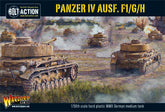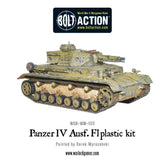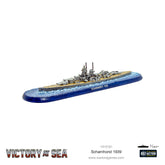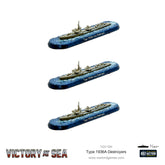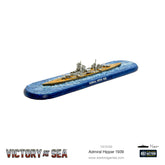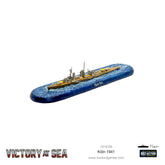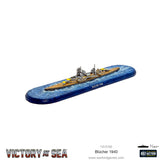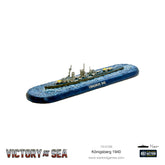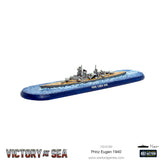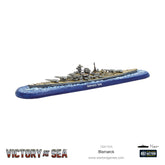Victory at Sea - Kriegsmarine
The Kriegsmarine was not a navy designed to tackle a major fleet head-on in engagements – it was primarily a commerce raiding force.
The Kriegsmarine had several powerful cruisers at its disposal, including what the British called ‘pocket battleships’ mounting heavier guns than a ship of their displacement normally would. The destroyers of the Kriegsmarine were excellent vessels, ship-for-ship they were a match for any destroyer afloat. German capital ships, such as the Scharnhorst, tied up large elements of the Royal Navy in case they took to open water and caused havoc amongst merchant convoys.
learn more about the Kriegsmarine fleet HERE
Filter
9 results
20
- 10
- 15
- 20
- 25
- 30
- 50
Featured
- Featured
- Best selling
- Alphabetically, A-Z
- Alphabetically, Z-A
- Price, low to high
- Price, high to low
- Date, old to new
- Date, new to old
Sort
Sort by:
- Featured
- Best selling
- Alphabetically, A-Z
- Alphabetically, Z-A
- Price, low to high
- Price, high to low
- Date, old to new
- Date, new to old
-
Victory at Sea: Schleswig-HolsteinThe pre-dreadnaught era Schelswig-Holstein enjoyed the dubious privilege of firing the opening shots of World War Two. Her barrage of the Westerplatte in Gdansk heralded the start of the German attack on the city. She was scuttled in March 1945, and some of her...
- £15.00
- £15.00
- Unit price
- / per
-
Victory at Sea - ScharnhorstThe German capital ship Scharnhorst was the lead of her two ship class, launching in October 1936. She was armed with a main battery of nine 28cm C/34 guns in three triple turrets. Though plans were drawn up to 38cm guns, these plans were...
- £20.50
- £20.50
- Unit price
- / per
-
Victory at Sea - Type 1936A DestroyersThe Type 1936 was a large and very powerful design mounting 5.9-inch guns, based on the general layout of the Type 1934. The intended twin turrets were not available in time, so planned armament was reduced to single mounts in some positions. As with...
- £27.50
- £27.50
- Unit price
- / per
-
Victory at Sea - Admiral HipperAdmiral Franz von Hipper was commander of the German battlecruiser squadron of the Battle of Jutland in 1916 and subsequently became commander-in-chief of the German high seas fleet. It was for him that Admiral Hipper was named, the lead ship of her class. Admiral...
- £16.50
- £16.50
- Unit price
- / per
-
Victory at Sea - KolnKöln was the third of the Königsberg-class of light cruiser, operating between 1929 and 1945, initially under the Reichsmarine and subsequently the Kriegsmarine. In the 1930s she served as a training vessel for cadets, but the outbreak of World War Two saw her conducting...
- £16.50
- £16.50
- Unit price
- / per
-
Victory at Sea - BlücherBlücher was named for Gebhard Leberecht von Blücher, who lead the Prussians to victory at Waterloo. She was the second of the Admiral Hipper-class of heavy cruisers, completed shortly after the outbreak of World War II. She was assigned to the task force supporting...
- £16.50
- £16.50
- Unit price
- / per
-
Victory at Sea - KonigsbergThe lead ship of her class, Königsberg had a similar operational history to that of her sister ships like Köln (see above), operating as a training vessel until the outset of World War Two. She spent the early part of the war laying defensive...
- £16.50
- £16.50
- Unit price
- / per
-
Victory at Sea - Prinz EugenThe third of the Admiral-Hipper-class of heavy cruisers, Prinz Eugen was named for Prince Eugene of Savoy, and 18th century Austrian general. She saw action during the German operation Rheinübung of 1941, in which, along with Bismarck, she attempted to breakout into the Atlantic...
- £16.50
- £16.50
- Unit price
- / per
-
Victory at Sea: Bismarck[countdown]2020/08/29 0:0:00[/countdown] Two Bismarck-class battleships were built for the Kriegsmarine. Bismarck was the first, named for the Chancellor (Otto von Bismarck). The battleship was laid down in July 1936 and launched February 1939. She and her sister ship, Tirpitz, were two of the largest...
- £20.50
- £20.50
- Unit price
- / per






